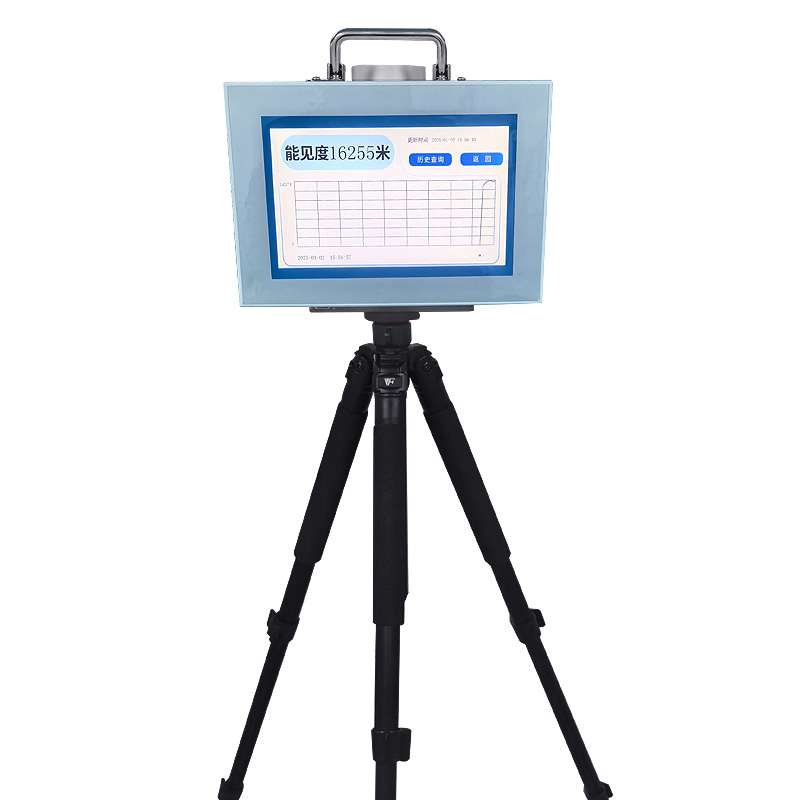Tianyi Sensor IOT Technology Co., Ltd
Sales Manager:Ms. Emily Wang
Cel,Whatsapp,Wechat:+86 15898932201
Email:info@fengtutec.com
Add:No. 155 Optoelectronic Industry Accelerator, Gaoxin District, Weifang, Shandong, China

Sales Manager:Ms. Emily Wang
Cel,Whatsapp,Wechat:+86 15898932201
Email:info@fengtutec.com
Add:No. 155 Optoelectronic Industry Accelerator, Gaoxin District, Weifang, Shandong, China

Model:FT-BN20
Brand:tianyi
1.Introduction to Portable Visibility detector
Portable visibility detector is able to measure visibility indoors or in any restricted environment, providing real-time visibility values.The BN20 Portable visibility detector uses forward scattering method to measure the total extinction coefficient of the air and calculates the current visibility.It is widely used in emergency, road traffic, meteorological and other scenarios.
2.Technical features of Portable visibility detector
1.Integrated portable design, light weight, easy to carry, ready to use;
2.10.1-inch high-bright touch screen, displaying data and historical curves in real time; ☆
3.Built-in large-capacity SD card (8G), data is saved in real time, and it supports query and export;
4.Built-in large-capacity lithium battery, which is convenient for outdoor emergency use;
5.The instrument shell is high-quality aluminum material, and the whole machine has excellent waterproof, dustproof and collision-proof performance;
6.Built-in watchdog circuit to ensure reliable and stable outdoor operation for a long time;
7.The instrument communication and power interfaces both contain lightning protection designs, which greatly reduce lightning strikes and static damage;
8.24V power supply, low power consumption, and long-term power supply;
9.The digital interface uses RS232 and is uploaded actively without adaptation protocol;
3.Portable visibility detector execution standards
QX/T 536-2020 Forward scattering visibility meter test method
4.Portable visibility detector technical parameters
| Main parameters | Parameter range | Resolution | error | |
| Range | BN10 | 10km☆ | 1m | ≤2km ±2%2km~10km ±5%>10km ±10% |
| BN20 | 20km☆ | |||
| Repeatability | ≤4% | |||
| Operating temperature | -20~60℃ | |||
| Working humidity | 0~100%RH | |||
| Working power supply (adapter) | 100-240V input 24V output 2.5A | |||
| Power consumption | <10W | |||
| Battery capacity | 6.6AH | |||
| Working hours | ≥12h | |||
| size | 300x150x220mm (Length x Width x Height) | |||
| weight | ≤10kg | |||
Before the advent of ultrasonic anemometers, traditional wind speed and direction measurements mainly relied on mechanical sensors.Cup anemometers calculate wind speed through wind force pushing three or four hemispherical cups to rotate, with rotational speed proportional to wind speed.Wind vanes,...
Against the backdrop of rapid industrialization, industrial parks—core hubs for industrial agglomeration—face prominent pollution discharge issues. These issues are characterized by complex compositions, diverse types, and high emission intensity. Among them, industrial clusters and parks involvin...
What are the negative oxygen ion monitors? One is a detector suitable for scenic spots, and the other is a handheld negative ion detector.For the negative ion detector in scenic spots, the FT-FZ1 Scenic Air Negative Oxygen Ion Monitor can be selected. This monitor can monitor the concentration of ne...
Meteorological monitoring system is a high-precision automatic meteorological observation device integrating temperature, humidity, wind speed, wind direction, and atmospheric pressure sensors. This device combines ultrasonic detection technology to achieve accurate all-weather monitoring of meteorological elements....